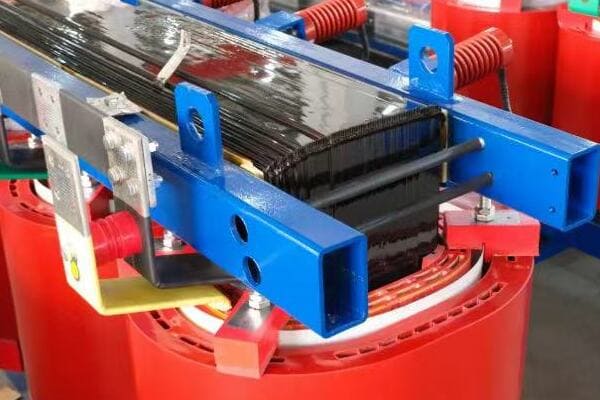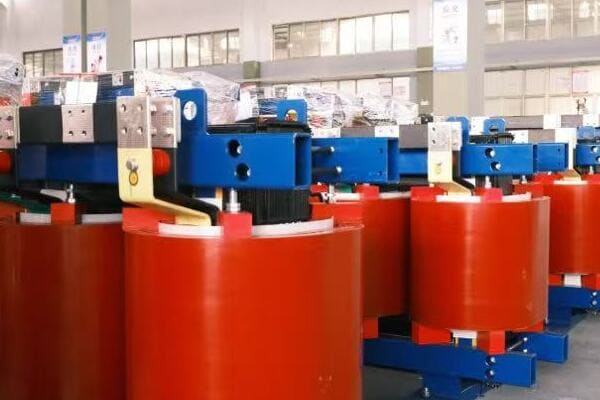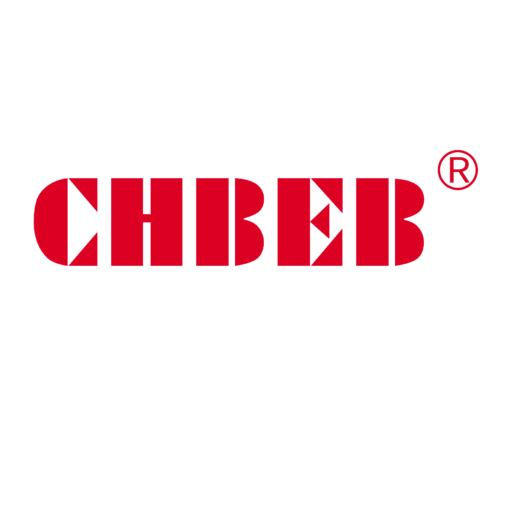Dry Type Transformer Cooling Explained: AN vs AF and Advanced Methods
Dry-type transformers use three common cooling systems: AN (Air Natural), AF (Air Forced), and ANAF (a hybrid of both). AN uses passive airflow, AF employs fans for enhanced cooling, while ANAF combines both approaches for optimal efficiency. Selecting the right method depends on factors such as load requirements, environment, and maintenance capabilities.
Are you struggling to choose the right cooling method for your dry-type transformer? Many engineers find this decision challenging, but understanding your options can lead to optimal performance and longevity.

In this comprehensive guide, we’ll explore various cooling methods for dry-type transformers, from basic natural air cooling to advanced hybrid systems. Whether you’re designing a new electrical system or upgrading an existing one, this article will help you make an informed decision about the best cooling method for your transformer.
The Importance of Cooling in Dry-Type Transformers
Proper cooling is crucial for the performance and longevity of dry-type transformers. Without effective heat dissipation, transformers can suffer from reduced efficiency, shortened lifespan, and potential failure.
Cooling systems in dry-type transformers manage heat generated during operation. Effective cooling prevents insulation degradation, maintains efficiency, and extends service life. The choice of cooling method impacts performance, installation options, maintenance needs, and safety compliance.

Key Factors Influenced by Cooling Efficiency
- Operational Performance
- Transformer Lifespan
- Installation Flexibility
- Maintenance Requirements
- Safety and Compliance
Impact on Performance and Lifespan
Effective cooling systems:
- Maintain optimal operating temperature
- Prevent hotspots in windings
- Ensure consistent performance under varying loads
💡 Project Insight: In a recent data center upgrade, replacing an undersized cooling system increased transformer efficiency by 15% and extended its projected lifespan by a decade.
Installation and Maintenance Considerations
The choice of cooling method affects:
- Space requirements for installation
- Noise levels in the surrounding area
- Maintenance schedules and costs
🔍 Field Example: For a remote industrial site, we chose AN cooling despite its lower capacity because the minimal maintenance requirements were crucial for the location’s limited access.
AN Cooling – Air Natural System Explained
AN (Air Natural) cooling is the most basic method for dry-type transformers, relying on passive airflow for heat dissipation.
AN cooling uses natural convection to dissipate heat. Hot air rises from the transformer, creating airflow that cools the unit. This method is ideal for indoor environments with low to medium loads, offering silent operation and minimal maintenance.

Key Features of AN Cooling
- No fans or moving parts
- Silent operation
- Minimal maintenance requirements
- Suitable for clean, indoor environments
Advantages and Limitations
| Advantages | Limitations |
|---|---|
| Silent operation | Limited cooling capacity |
| Low maintenance | Not suitable for high ambient temperatures |
| Lower initial cost | Requires adequate space for air circulation |
💡 Project Insight: In a multi-story office complex, we installed AN-cooled transformers on each floor. The absence of fans meant zero noise pollution, crucial for the working environment.
AF Cooling – Air Forced System Explained
AF (Air Forced) cooling enhances heat dissipation in dry-type transformers through the use of fans.
AF cooling uses fans to force air over windings, boosting heat removal for higher load capacity. This method is ideal for compact installations or environments with higher ambient temperatures.

Key Features of AF Cooling
- Active air circulation via fans
- Higher cooling capacity than AN systems
- Ability to handle greater loads and power densities
- Adaptable to varying load conditions
Advantages and Limitations
| Advantages | Limitations |
|---|---|
| Higher cooling capacity | Requires regular maintenance |
| Compact installation possible | Generates operational noise |
| Handles variable loads | Higher energy consumption |
🔍 Field Example: In a manufacturing plant upgrade, replacing AN-cooled transformers with AF units allowed for a 30% increase in production equipment without expanding the electrical room.
Advanced Cooling Methods – ANAF, ANCF and More
Advanced cooling methods combine the benefits of different approaches to meet complex transformer needs.
ANAF (Air Natural, Air Forced) and ANCF (Air Natural, Closed-loop Forced) are hybrid cooling systems. ANAF switches between passive and active cooling based on load, while ANCF uses sealed air channels for harsh environments. These methods offer enhanced performance and adaptability.

Types of Advanced Cooling Systems
- ANAF (Air Natural, Air Forced)
- ANCF (Air Natural, Closed-loop Forced)
- Heat pipe assisted cooling
- Phase change material (PCM) integration
Advantages of Advanced Cooling Methods
- Adaptability to varying load conditions
- Enhanced protection in harsh environments
- Improved energy efficiency
- Extended transformer lifespan
💡 Project Insight: For a coastal industrial facility, we implemented an ANCF system to protect against corrosive sea air. This solution increased reliability and reduced maintenance costs significantly.
Comparative Table – AN vs AF vs ANAF
Choosing the right cooling method requires understanding the key differences between systems.
| Feature | AN (Air Natural) | AF (Air Forced) | ANAF (Air Natural, Air Forced) |
|---|---|---|---|
| Cooling Method | Passive airflow | Fan-assisted airflow | Hybrid (passive + active) |
| Cooling Efficiency | Low to Moderate | High | Very High |
| Noise Level | Silent | Moderate | Low to Moderate |
| Maintenance | Very low | Medium | Medium to High |
| Load Capacity | Low to Medium | High | Very High |
| Ideal Application | Indoor, low load | Industrial, mid-load | Variable load, harsh conditions |
Selecting the Optimal Cooling System for Your Project
Selecting the appropriate cooling system is crucial for optimal transformer performance.
Cooling System Selection Checklist
Before choosing a cooling system, evaluate these key parameters for your project:
Checklist for Cooling Selection:
- ✅ Installation environment (indoor/outdoor)
- ✅ Load profile (stable/variable)
- ✅ Ambient conditions (temperature, humidity, contaminants)
- ✅ Noise restrictions
- ✅ Maintenance capabilities
- ✅ Energy efficiency requirements
- ✅ Budget constraints
Decision Matrix for Cooling System Selection
| Factor | Favors AN | Favors AF | Favors ANAF |
|---|---|---|---|
| Environment | Indoor, clean | Outdoor, variable | Harsh, contaminated |
| Load | Stable, low to medium | High, consistent | Variable, high peaks |
| Noise Concern | High | Low | Moderate |
| Maintenance | Minimal available | Regular possible | Specialized available |
💡 Project Insight: For a data center with variable loads and high efficiency requirements, we chose an ANAF system over standard AF. This decision improved cooling performance and resulted in substantial energy savings over time.
Conclusion: Cooling Efficiency Determines Performance
Choosing the right cooling method for dry-type transformers is crucial for optimal performance and longevity. AN, AF, and ANAF systems each have their strengths for different applications. Consider environmental factors, load profiles, and maintenance capabilities when selecting. The right cooling system ensures efficiency, reliability, and cost-effectiveness in your transformer operations.
📩 Need help selecting a dry-type transformer cooling system?
Contact our experts for a custom AN, AF or hybrid transformer recommendation. Get a tailored recommendation that saves energy, reduces risk, and extends equipment life.
Recent Post
Quick Message
Request A free quote
We'd like to work with you
- +86 15558785111
- chbebgroup@chbebpower.com
- +86 15558785111
What We Do
CHINA BEI ER BIAN (CHBEB) GROUP, with 218 million in registered capital, originated from Beijing Beierbian Transformer Group. Headquartered in Beijing for R&D, it operates major production bases in Nanjing and Yueqing, producing high-quality products.
Latest Post
Latest Product
Contact Us
- +86 15558785111
- chbebgroup@chbebpower.com
- +86 15558785111
BeiJing
No 3,RongJing East Road,BeiJing Economic Technological Development Area,BeiJing,China
JiangSu
No 7️Xiangfeng Road,Jiangning,NanJing,JiangSu,China
WenZhou
No.211, Wei 16 Road, Industrial Zone, Yueqing, Wenzhou, Zhejiang, China.
XiangYang Industrial Zone ,YueQing,WenZhou,ZheJiang,China

